Web design constantly evolves, with trends, human behavior, and industry demands continuously in flux. Yet, if you understand it well, it remains a crucial component in establishing a strong digital presence. For this reason, businesses hire the best web design firms to help them achieve their goals.
However, learning web design is always a good first step. Whether you're an aspiring web designer, an experienced professional, or a curious entrepreneur and lifelong learner, staying on top of the latest web design insights, tips, and tricks is essential for keeping your skills sharp and in demand.
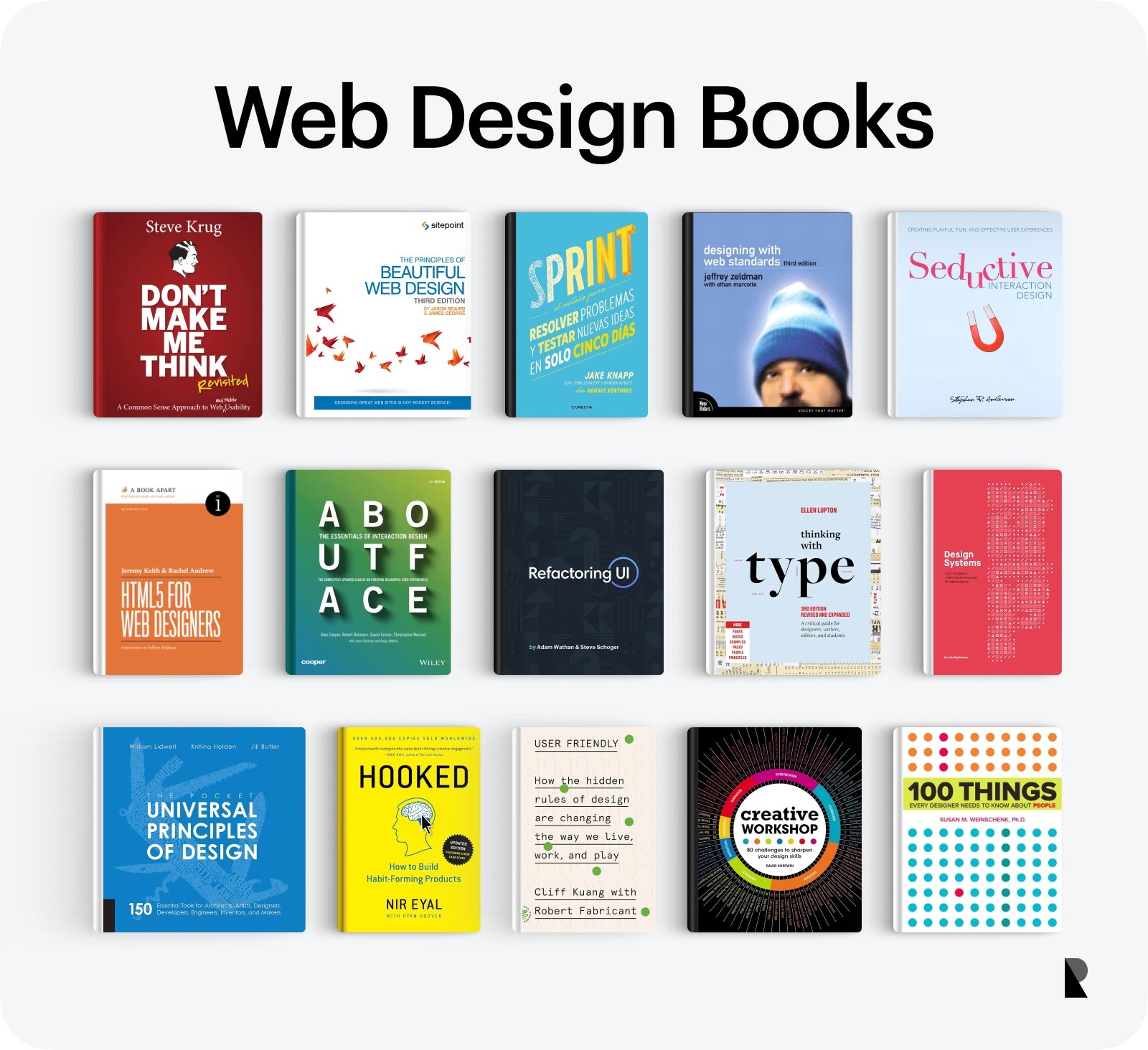
Read on as we explore the 15 best design books that can unlock a wealth of knowledge from industry experts. You'll gain a deeper understanding of the evolving landscape of web design, which can keep you ahead of the curve and deliver exceptional results for your clients or passion projects.
15 Best Web Design Books for Aspiring and Expert Designers
The following books are carefully curated to cover key areas of web design, including UX research and design, UI design, the relationship between design and human psychology, and best practices in web design.
1. Don’t Make Me Think by Steve Krug
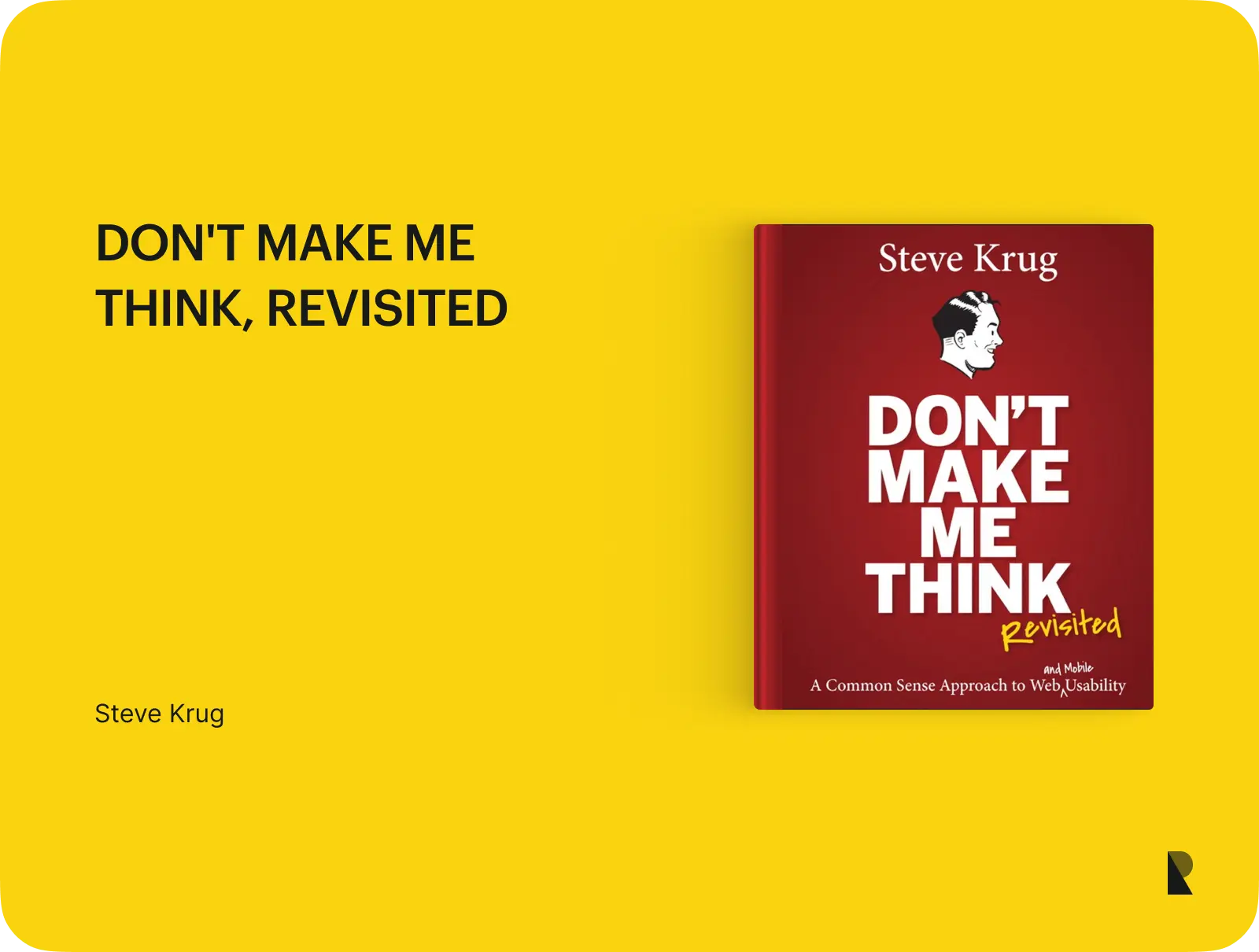
Don’t Make Me Think via Sensible
Steve Krug's "Don't Make Me Think" is an excellent choice if you're looking for a simple yet practical guide to functional web design.
The author's humor and engaging writing style make the book stand out. Krug conveys his lessons in an informative and entertaining manner that keeps readers engaged. “Don’t Make Me Think” is one of the best books for web designers who want to learn the concepts of intuitive navigation and usability. It is also a handy design book for business owners and beginners seeking a solid foundation in web design fundamentals.
The book stresses the importance of designing a self-explanatory and practical web experience. It should allow users to understand its functionality at a glance without requiring extra mental gymnastics.
The best part of the book? It's short! Readers can skim through the pages and finish it within a few hours.
2. The Principles of Beautiful Web Design by Jason Beaird and James George
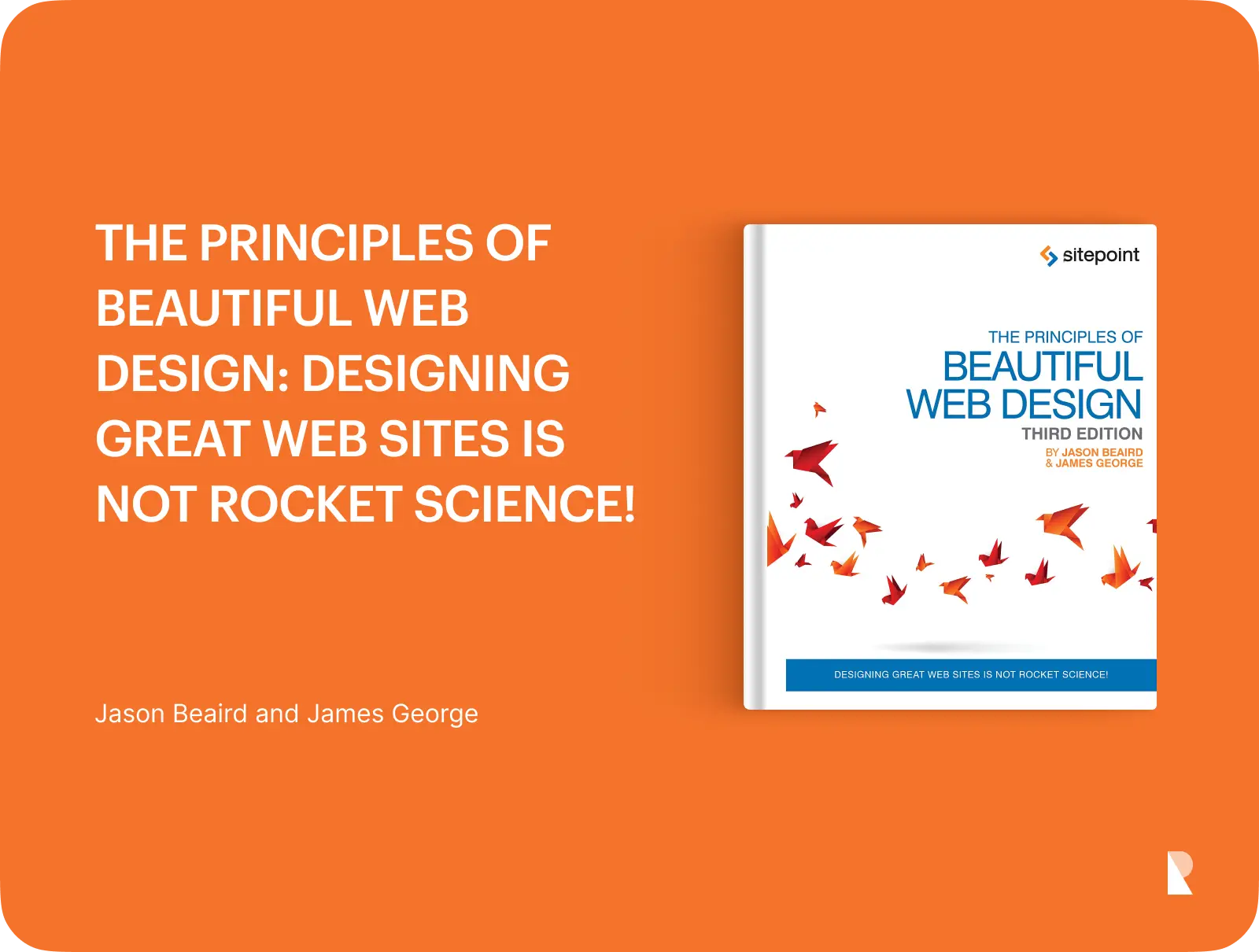
The Principles of Beautiful Web Design via Goodreads
“The Principles of Beautiful Web Design” is one of the best books that examines the impact of designing a visually appealing website. It covers several topics, such as understanding sound design principles and effectively using color, layout, and composition.
It also explores how typography enhances the appeal and readability of web design. Finally, "The Principles of Beautiful Web Design" emphasizes the importance of striking a balance in designing a user experience. Packed with colorful illustrations and examples, it clearly explains the dos and don'ts of web design and provides actionable tips that you can apply immediately to your current projects.
3. Refactoring UI by Adam Wathan and Steve Schoger
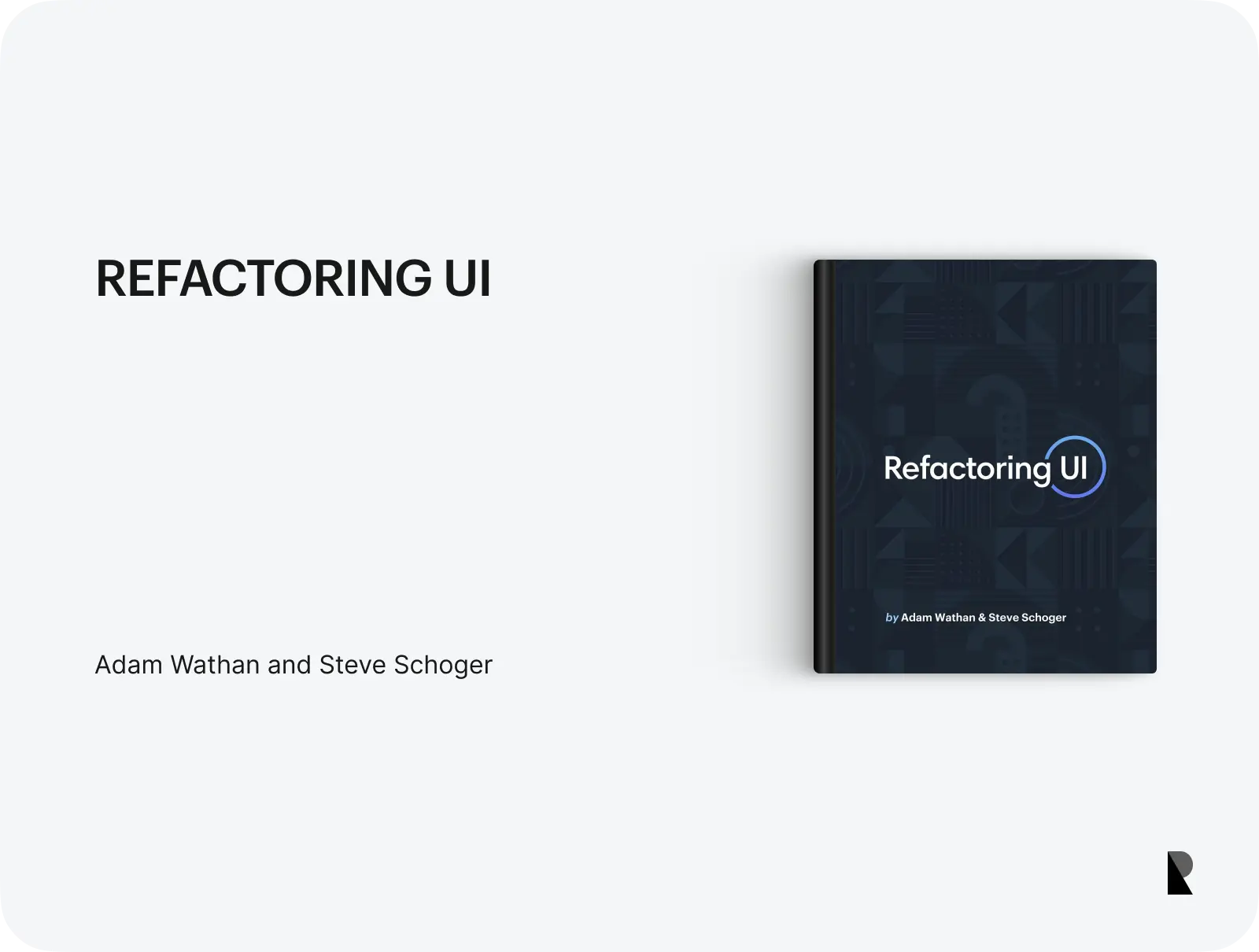
Design beautiful interfaces via Refactoring UI
"Refactoring UI" is an excellent choice for web developers who want to DIY their web design and improve the UI from scratch. The design book is for individuals who prefer to learn independently.
It covers the essentials of designing a beautiful interface well—without technical jargon—and contains tips and tricks from industry experts that can be applied in real-world situations. For example, consider working in cycles by stripping down the design framework to its bare essentials. This allows you to build on it as you work towards your goals.
The book bridges the gap between coding and design, making it easier for developers of all levels to create websites and apps without extensive UI design knowledge.
4. Designing with Web Standards by Jeffrey Zeldman
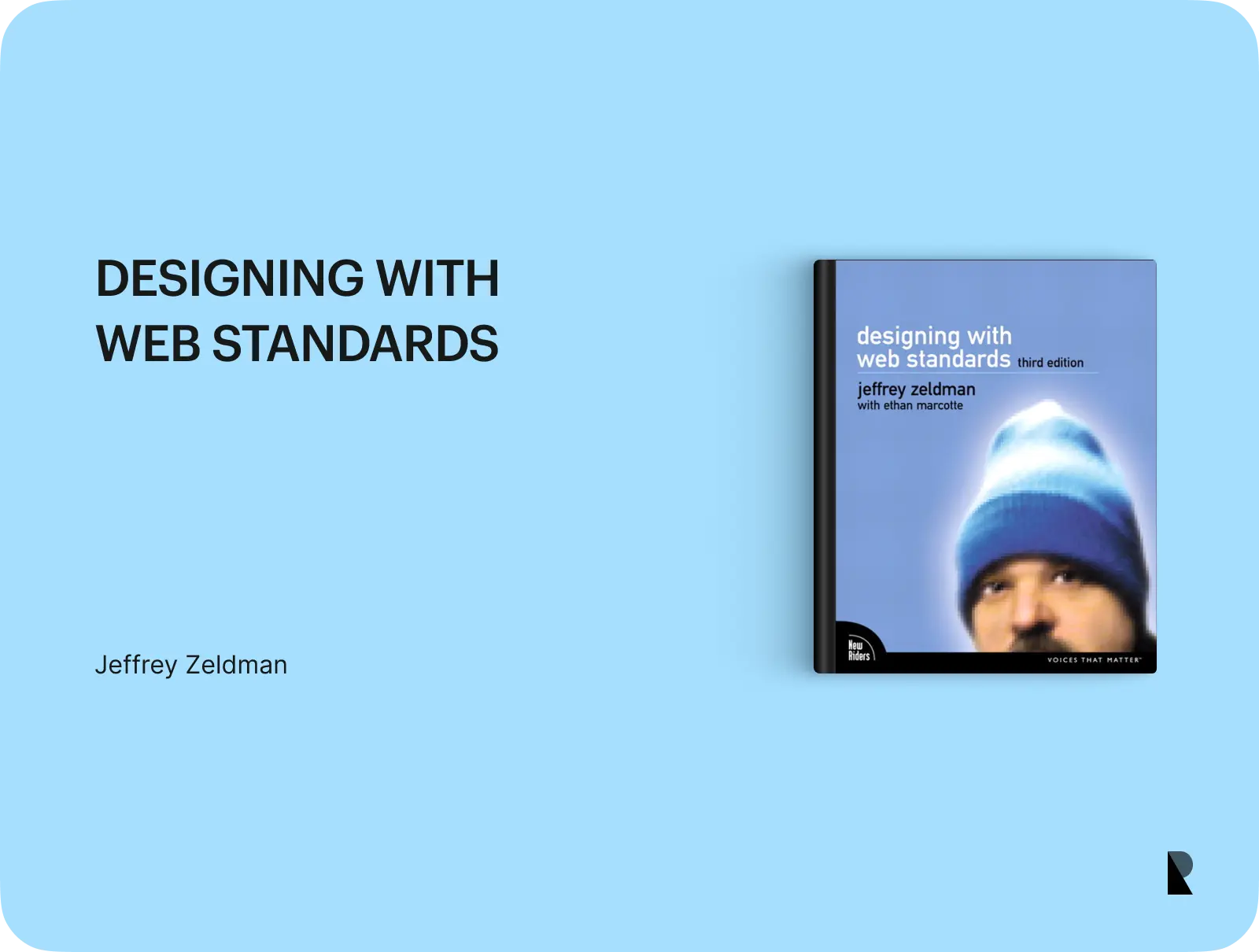
Designing with Web Standards via Web Design Museum
As various digital devices flood the market, web designers now face the challenge of ensuring their websites are compatible across different screen sizes and capabilities.
While web experts once only had to design for desktops, they now must optimize for smartphones, tablets, and other devices.
This is where one of the best books in web design, "Designing with Web Standards," can help. The book teaches web developers and designers how to create efficient and widely compatible websites across different browsers and devices. This is done using web standards that emphasize writing clean, maintainable code to improve website performance and future-proof the user experience.
5. Seductive Interaction Design by Stephen Anderson
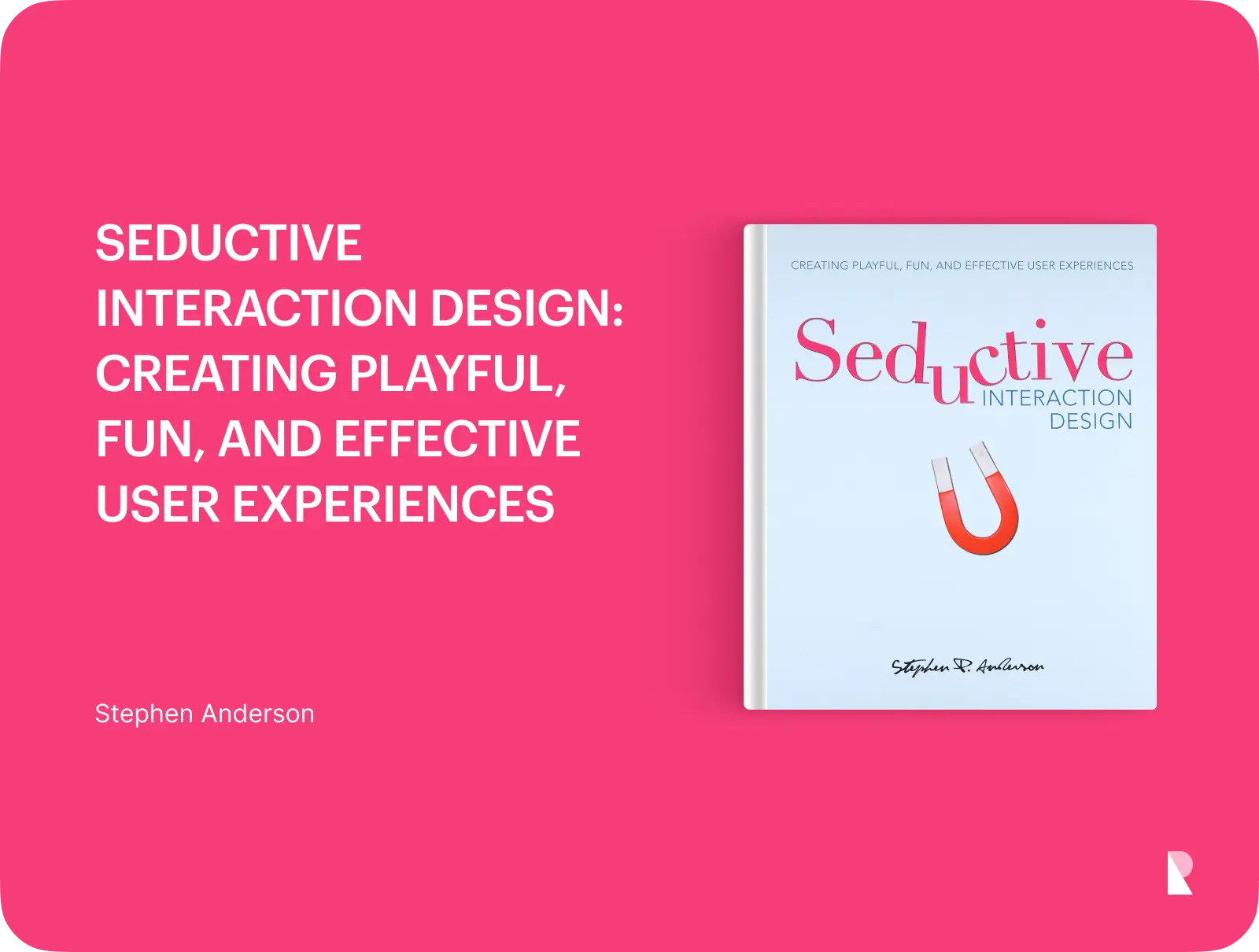
Seductive Interaction Design via Amazon
When well-curated, Every web element can significantly impact the conscious and unconscious minds of users browsing your website. If you're ever curious about the psychological side of UI design, then Seductive Interaction Design can be your trusty guide.
It covers topics such as what drives people to interact with websites and apps and the principles of psychology that can be applied to enhance user appeal. It also explores how designers can incorporate game-like elements to create a fun experience without compromising the functionality of their website or app. Lastly, Anderson emphasizes the importance of using the right tone and language to foster a relatable and compelling user interaction.
6. A Book Apart Series (Multiple Authors)
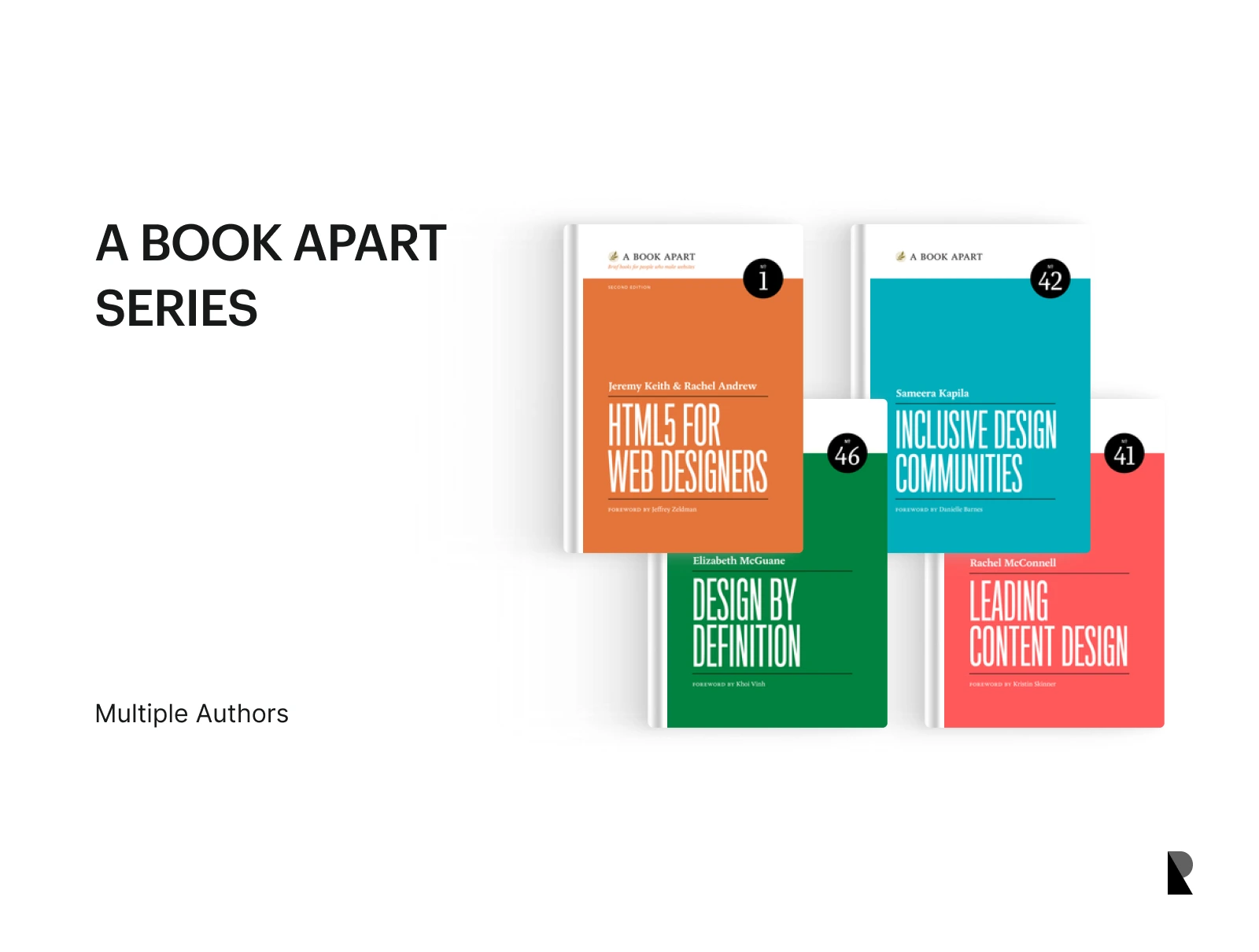
A Book Apart contains 48 books written by designers. Image via A Book Apart
The “A Book Apart” series comprises 48 short design books for individuals seeking to expand their web design, development, and content strategy knowledge. It discusses the basics of HTML and CSS3 with expert insights from industry professionals. The authors also included blog posts and case studies demonstrating the practical applications of CSS3, making it the best programming book for web professionals.
The series delves into the effective planning and management of content on websites. For example, it covers the framework for managing a company's online presence across various platforms. The book also examines multiple research methods and principles used in the design of digital products.
7. About Face: The Essentials of Interaction Design by Alan Cooper
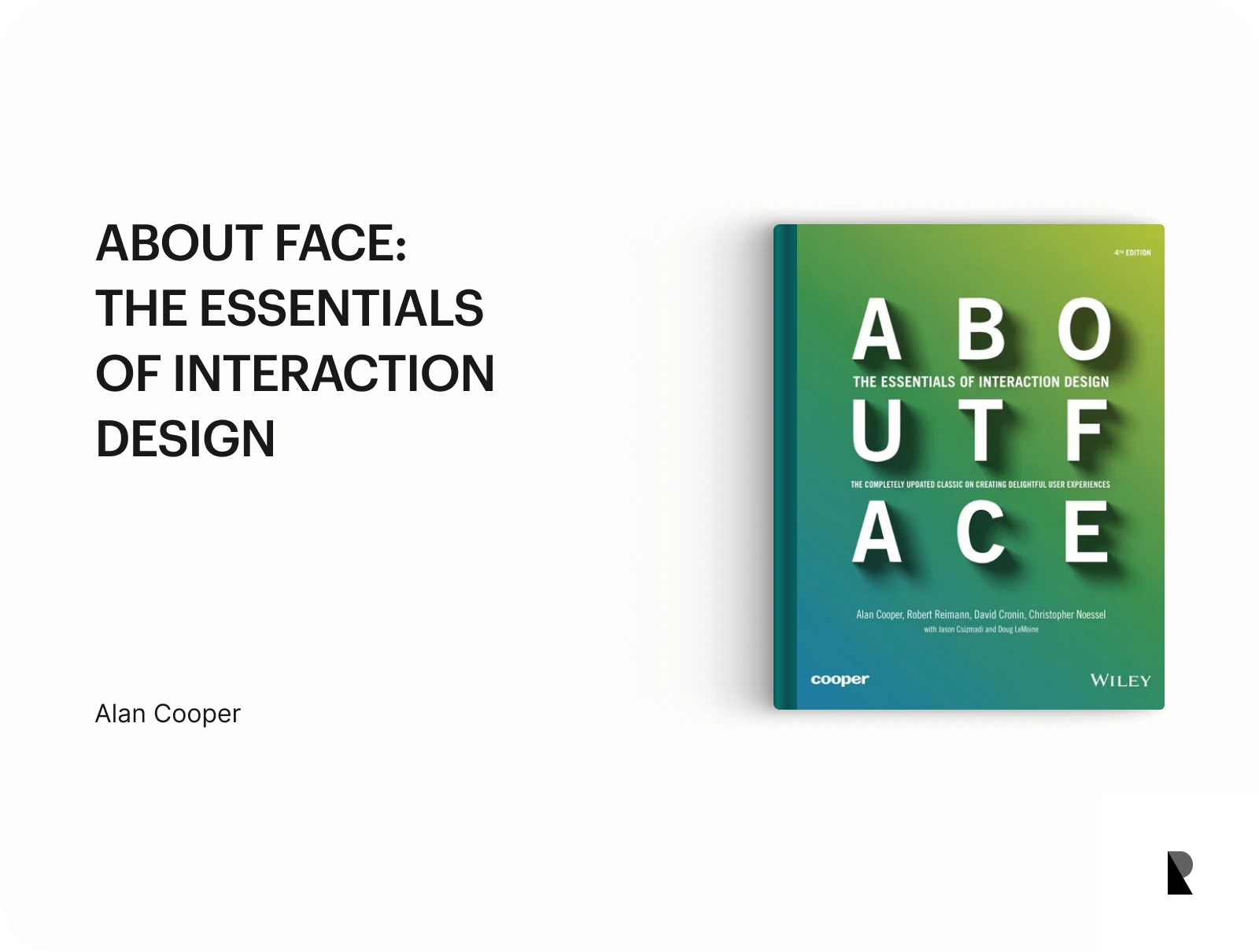
About Face: The Essentials of Interaction Design via Google Books
Learn something from the Father of Visual Basic, Alan Cooper. He breaks down his goal-directed design methodology, which helps designers understand what users want and how to meet their needs.
The book highlights user research's key role in creating products that solve their problems. Moreover, it tackles design principles for building an intuitive user interface.
About Face has undergone several iterations, with the latest edition focusing on UX design practices for mobile and web applications. It also explores agile methodologies and user testing frameworks. As people's lives increasingly revolve around digital devices, this updated version offers valuable insights for crafting exceptional user experiences across various platforms.
8. Sprint: How to Solve Big Problems and Test New Ideas In Just Five Days by Jake Knapp
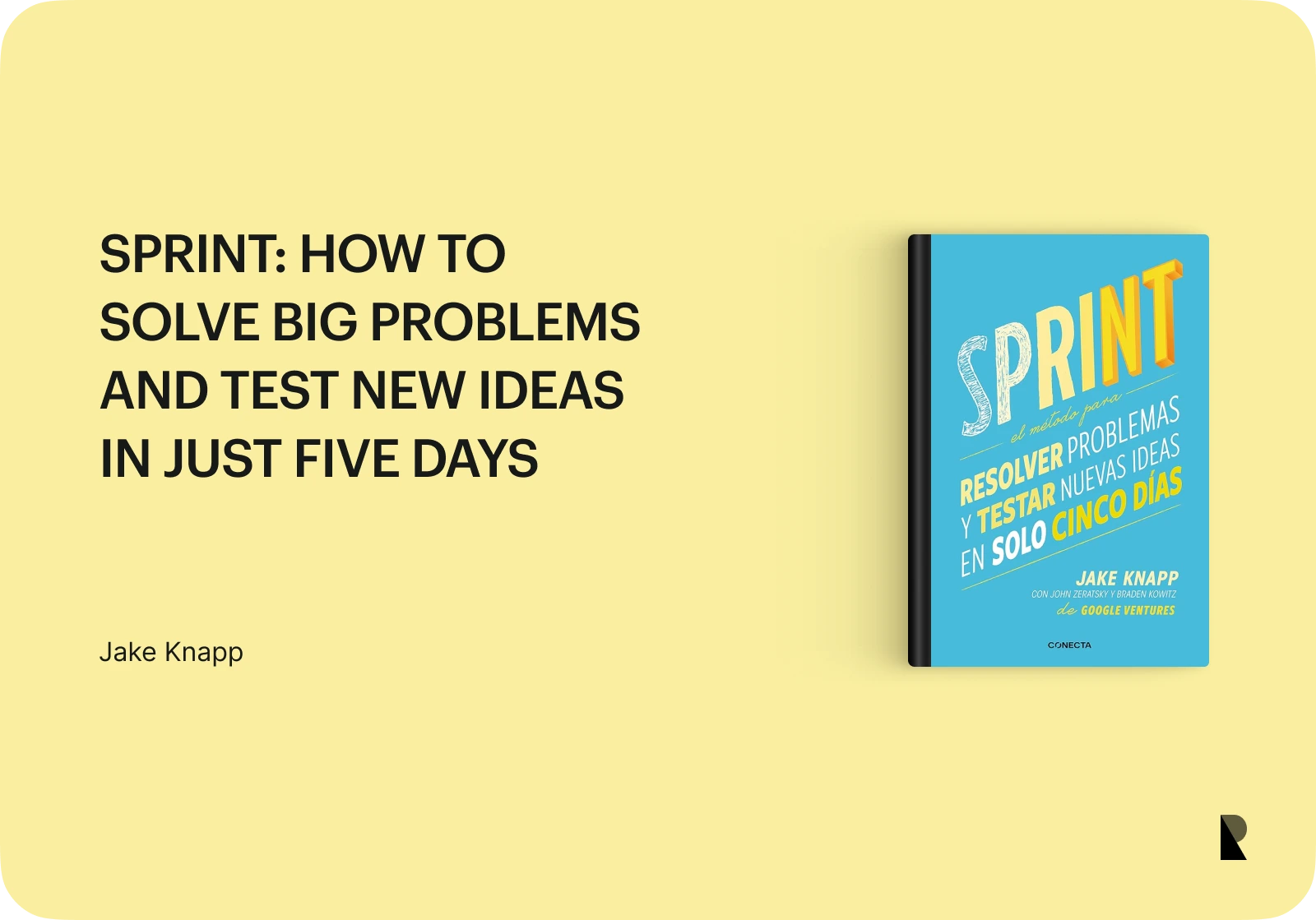
Image via The Sprint Book
Design sprints have become widespread among product managers, web teams, and startups. They aim to test and validate ideas within five days before investing significant time and resources.
Inspired by the unique challenges startups face at Google Ventures, the book provides a recipe-like outline of how to plan and implement a design sprint—from brainstorming solutions to creating a prototype and testing with real users.
"Sprint" is lauded for its ability to provide a step-by-step guide that readers of all levels can follow. The book also includes real-life examples from companies like Slack and Blue Bottle, illustrating how the sprint helped them reach their goals.
9. Thinking With Type by Ellen Lupton
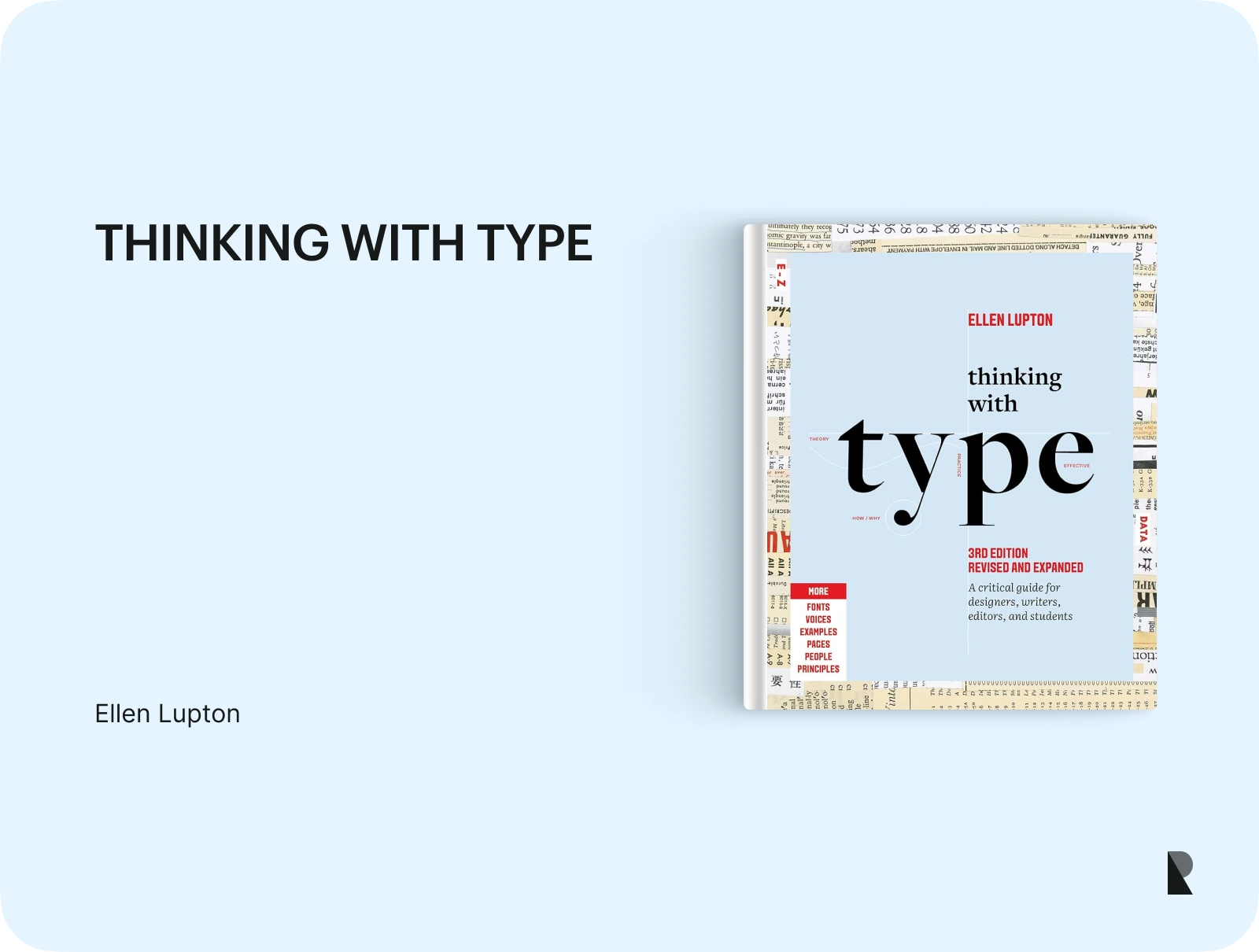
Thinking with Type via Ellen Lupton
Typography has played a crucial role in visual design, ensuring text is easy to read and comprehend while utilizing typefaces and fonts to convey specific emotions.
However, effectively applying typography requires a deep understanding of the subject. Ellen Lupton, a globally recognized graphic designer, author, and educator, has written "Thinking With Type" to address this need.
The book is a comprehensive guide split into three easy-to-understand sections: letters, text, and grids. It contains illustrative examples, practical tips to avoid common typography mistakes and exercises that allow you to immediately apply what you've learned.
Thinking With Type perfectly blends typography history, theory, and actionable advice.
10. Design Systems by Alla Kholmatova

Design Systems via Smashing Magazine
Design systems are crucial for enhancing collaboration between web designers and developers. The book "Design Systems" offers a fresh perspective on effectively approaching and implementing design systems.
Drawing from real experiences, Alla Kholmatova provides rich insights and tried-and-tested tips on applying design principles to create patterns that inspire user actions and align with user behaviors and brand identity. The book also includes case studies of companies that have successfully implemented design systems like Airbnb.
11. Universal Principles of Design by William Lidwell

Image via Universal Principles of Design
Good design isn't just aesthetically pleasing; it's also functional. It has the power to tap the subconscious and influence behaviors. Universal Principles of Design is another of the best web design books that emphasizes the psychological side of design.
It contains over 100 design concepts, including the 80/20 rule, baby face bias, usability principles, and accessibility guidelines. Each of these is illustrated with images that readers can easily grasp. Concepts are explained understandably, even to those new to the design field.
Understanding these universal guiding principles allows web designers to create more effective websites, apps, and user experiences. The book can be applied across various designs, including web graphics and animation.
12. Hooked: How to Build Habit-Forming Products
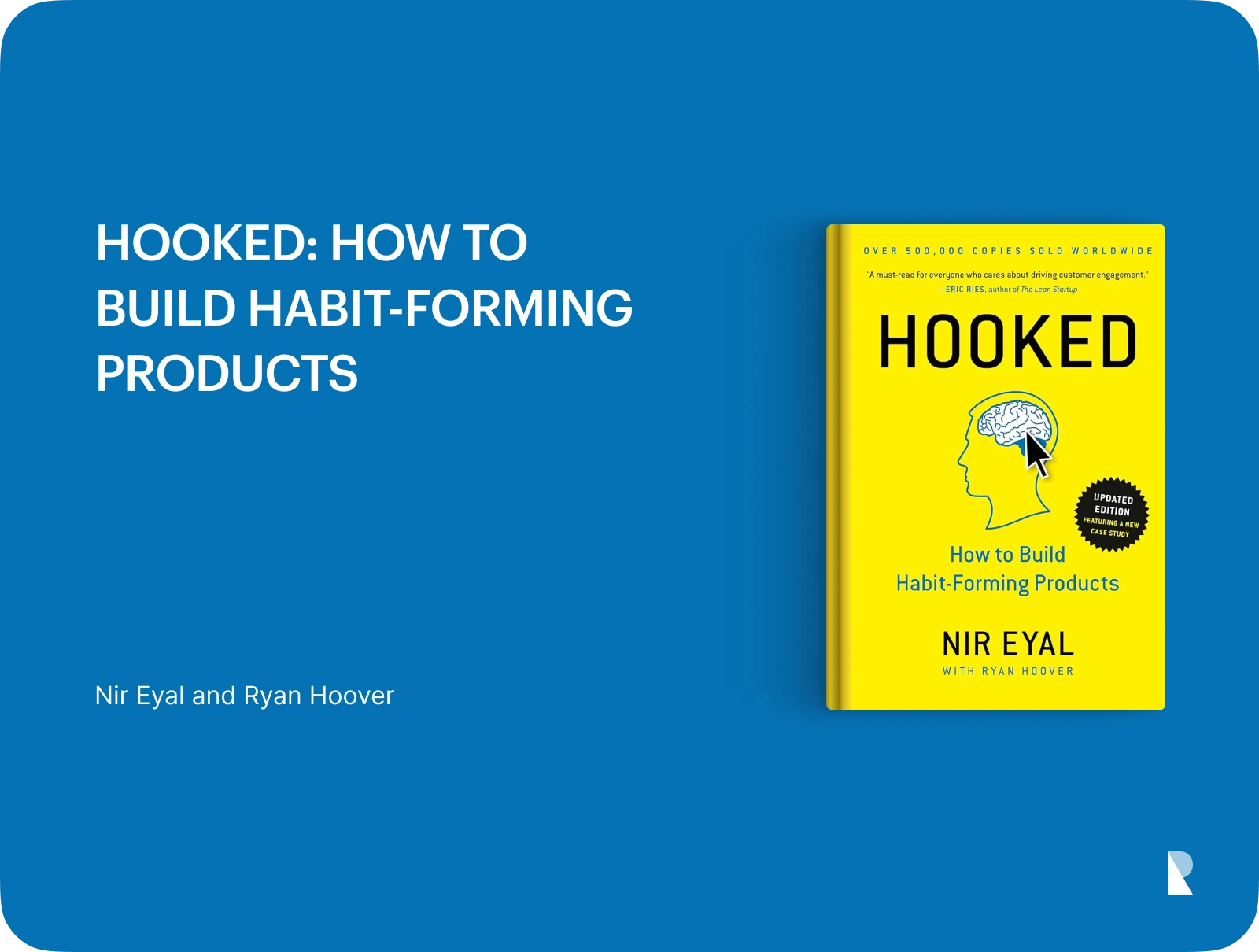
Hooked via Nir and Far
With thousands of websites and mobile apps available to users, it's challenging to stand out. But what if you can create a website or app people can't resist? How can you drive engagement and keep your users coming back?
This is the premise of Hooked: How to Build Habit-Forming Products, a book for startups and product designers. It introduces the Hook model, which entails four key components: trigger, action, variable reward, and investment.
The Hook model offers a practical framework for product development. It also features successful companies implementing the model, such as Facebook and Instagram. Finally, it delves into the psychology behind forming habits and how to apply them to product development.
13. Creative Workshop: 80 Challenges to Sharpen Your Design Skills by David Sherwin
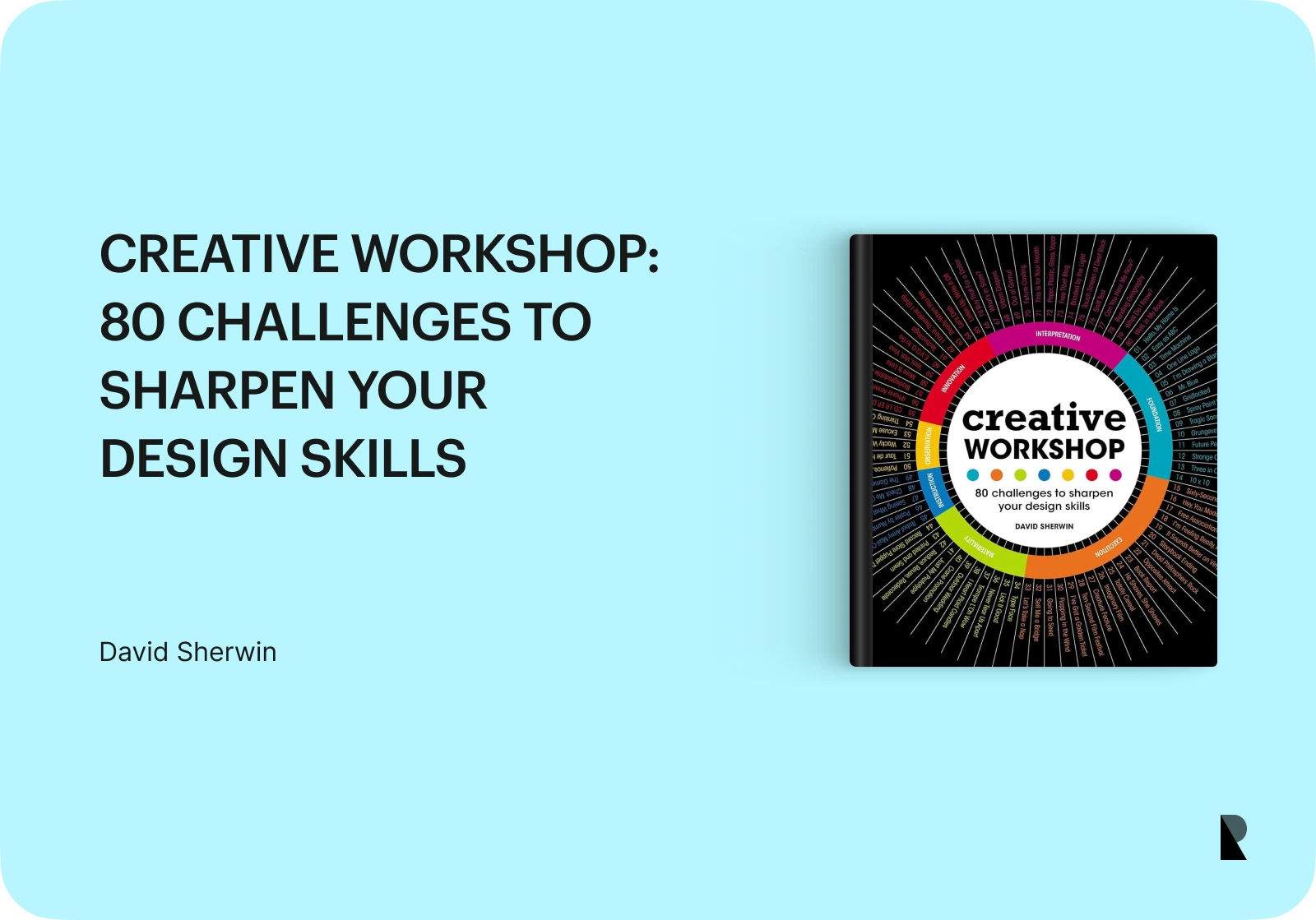
Creative Workshop via David Sherwin
Working as a designer can be daunting. Sometimes, the creative juices run dry, and ideas are hard to come by. This can be frustrating for designers! Understanding this problem, David Sherwin wrote Creative Workshop, a book filled with 80 challenges that aim to push your design abilities to their limit.
Some of the book's challenges or exercises include designing a typeface from scratch in just one hour. This challenge encourages designers to focus on and develop their typography skills. Another challenge tackles three-dimensional thinking by creating a paper robot.
In addition to sharpening your design skills, Creative Workshop is designed to improve your time management and encourage you to try different design fields.
14. 100 Things Every Designer Needs to Know About People by Susan Weinschenk
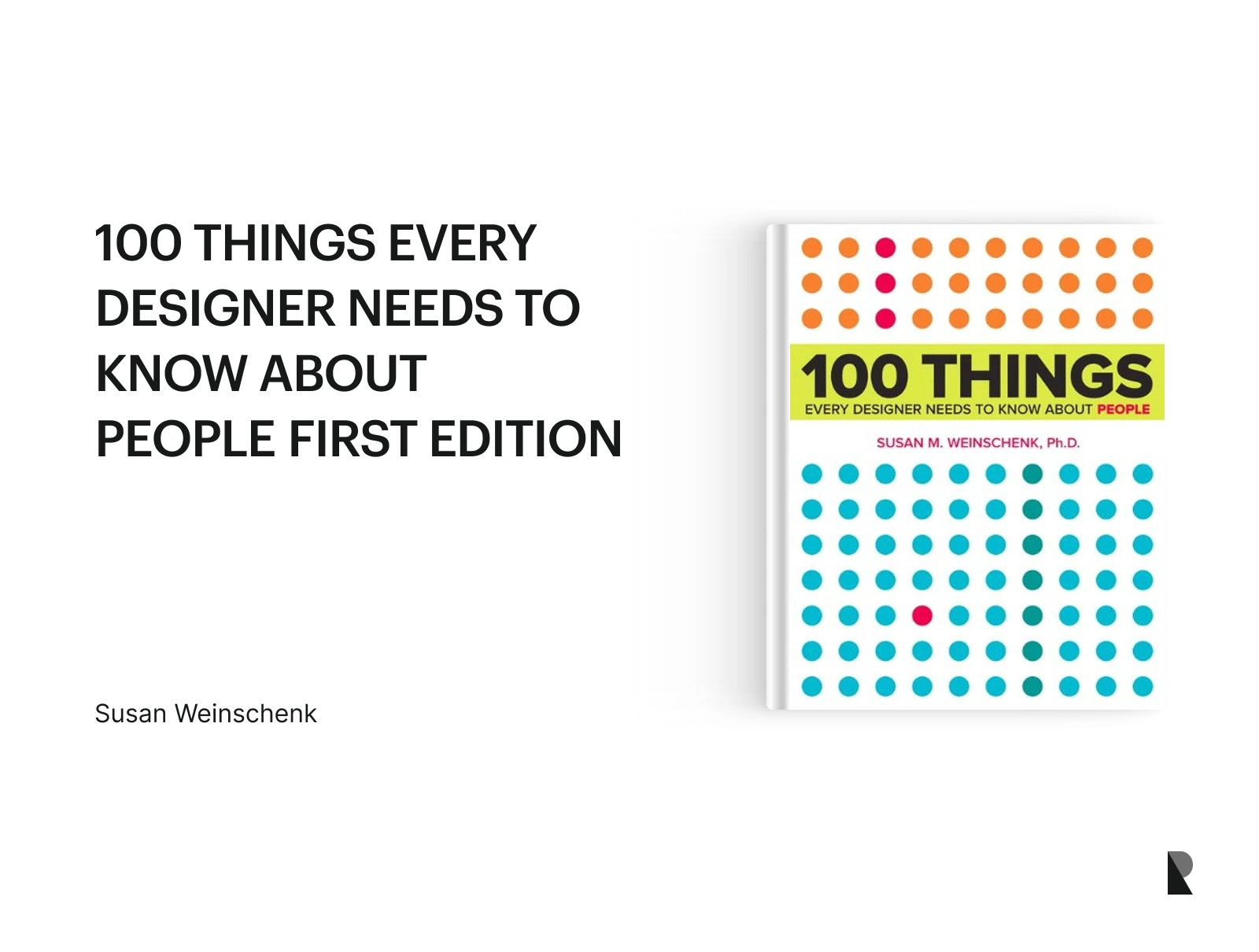
100 Things Every Designer Needs to Know About People via Goodreads
Understanding how people think can make a massive difference in providing an excellent user experience (UX). And this is precisely what 100 Things Every Designer Needs to Know About People talks about. When you understand what motivates people, their needs, and desires, you can design websites and apps that positively impact their lives.
The book comprises one hundred chapters, each focusing on a different aspect of human behavior. It covers visual perception and attention, memory, and learning techniques to enhance memorability, as well as insights into what drives people to take action on content they engage with.
So, if you're looking for a comprehensive guide to understanding human psychology and design, this is it!
15. User Friendly by Cliff Kuang and Robert Fabricant
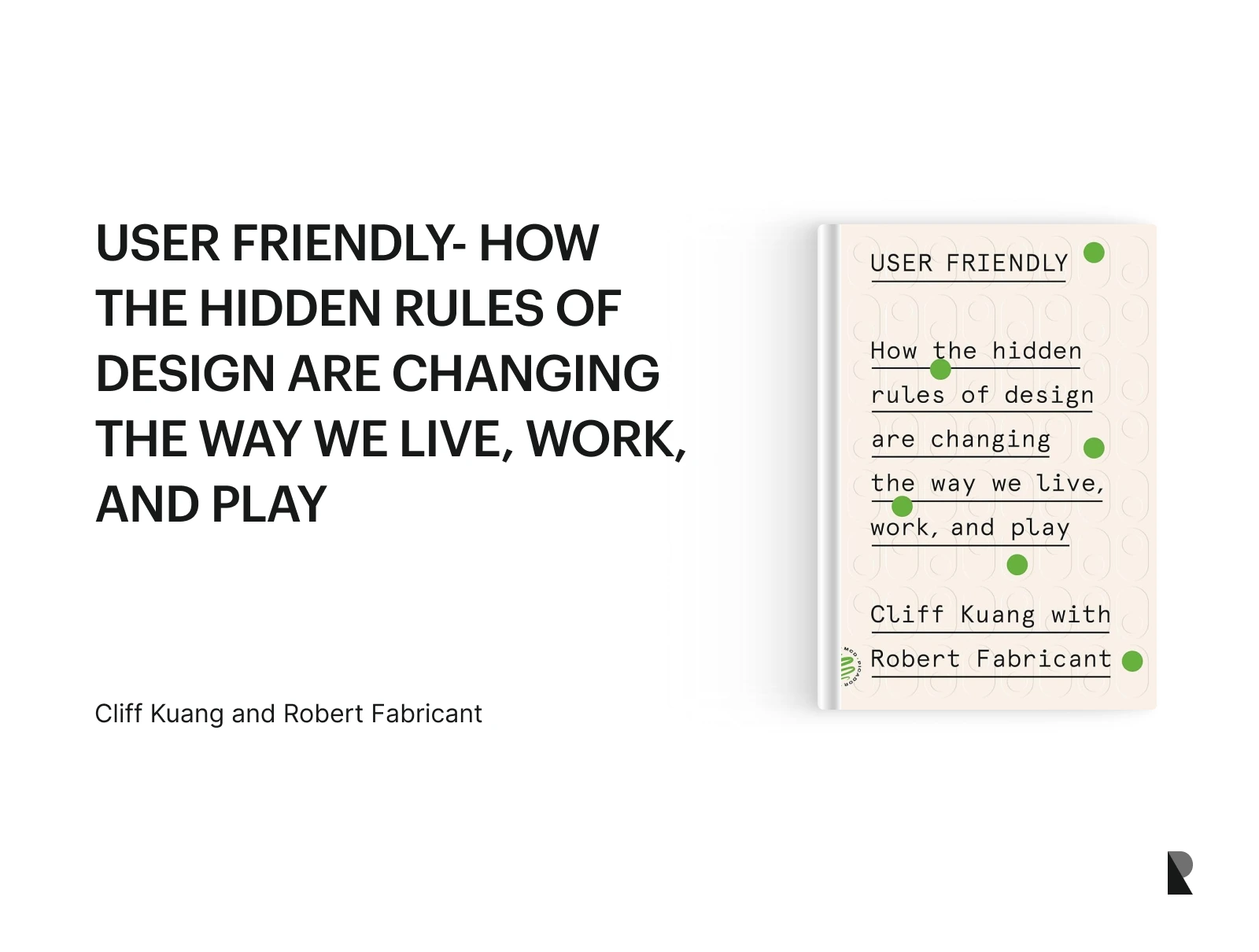
User Friendly via Penguin
From World War II to today's digital-first world, design has always been a commanding presence that influenced how we live in our society. In their book "User Friendly," award-winning journalist Cliff Kuang and Robert Fabricant, co-founders of Dalberg Design, have written a masterpiece that encompasses the history of user experience design.
The book also highlights the hidden design rules that impact our behavior and decisions. It explains how designers think about people's needs when creating products. But more than stepping back to the past, "User Friendly" emphasizes how good design can improve lives and make technology more accessible. It pushes designers to strive to create something that makes things work better for everyone—something truly user-friendly.
Final Thoughts
It's not enough to create a beautiful web design. It must also immerse users in a seamless, memorable interaction that keeps them returning. From mastering the principles of intuitive user experiences and user interfaces to exploring the psychology behind habit-forming products, we hope these resources will equip you with the right tools and strategies to create impactful web design and user experiences.
So, which of the best web design books will you read first?
Jun 5, 2025
